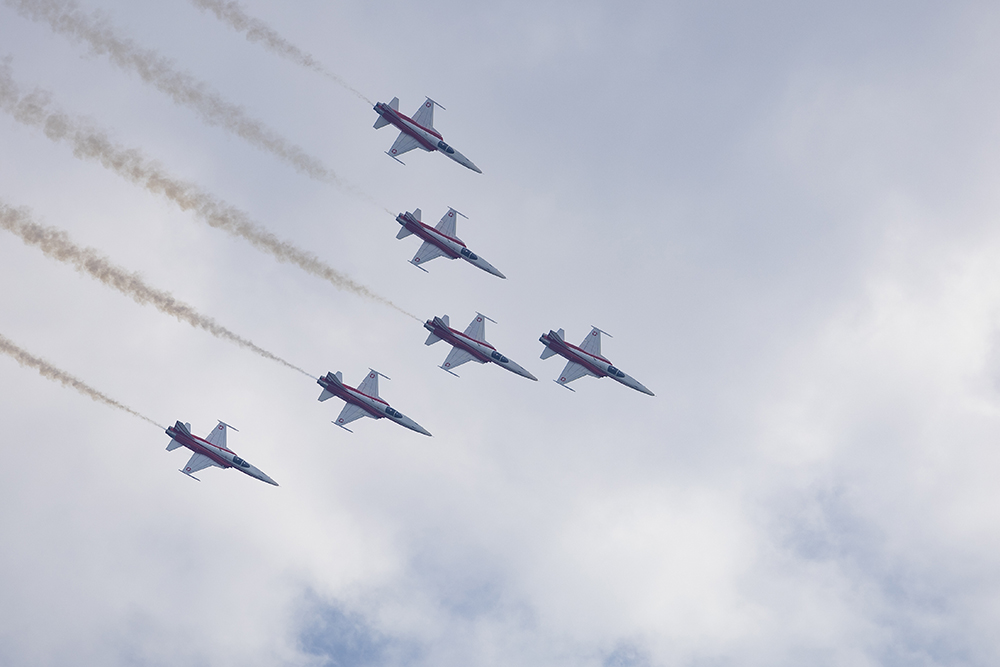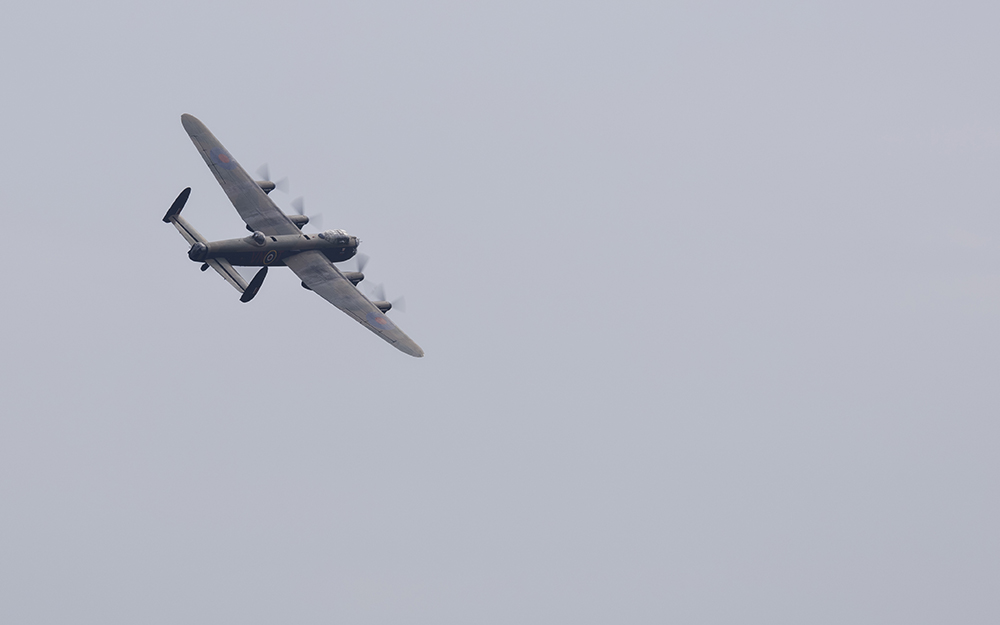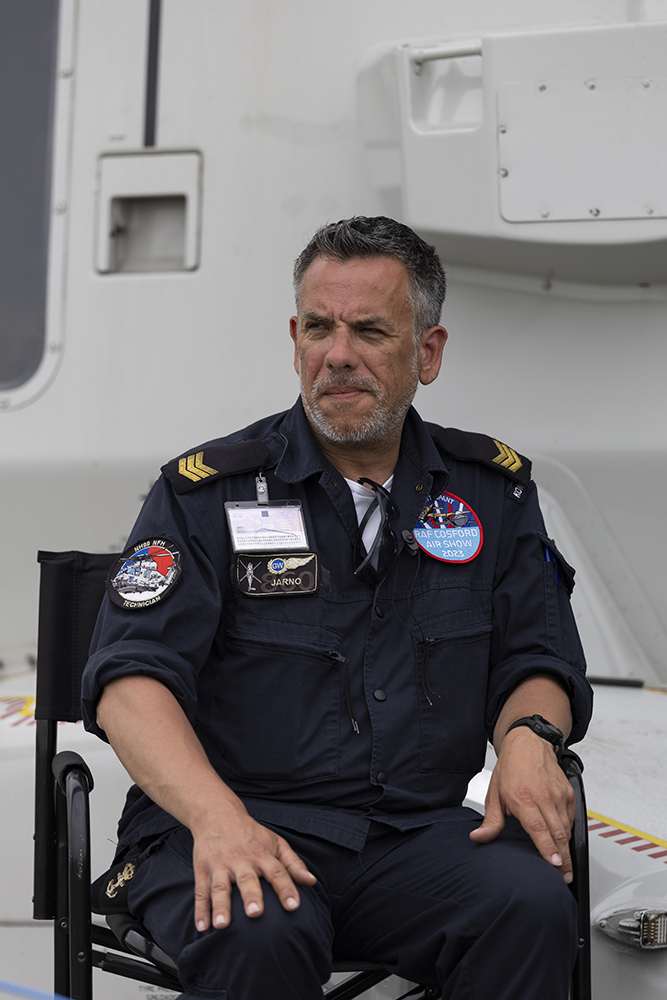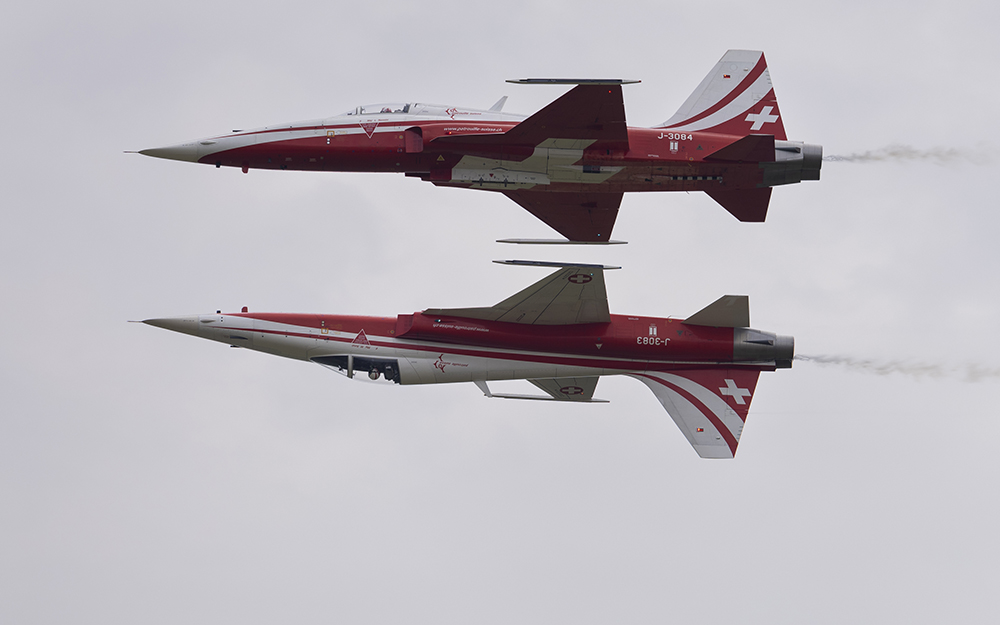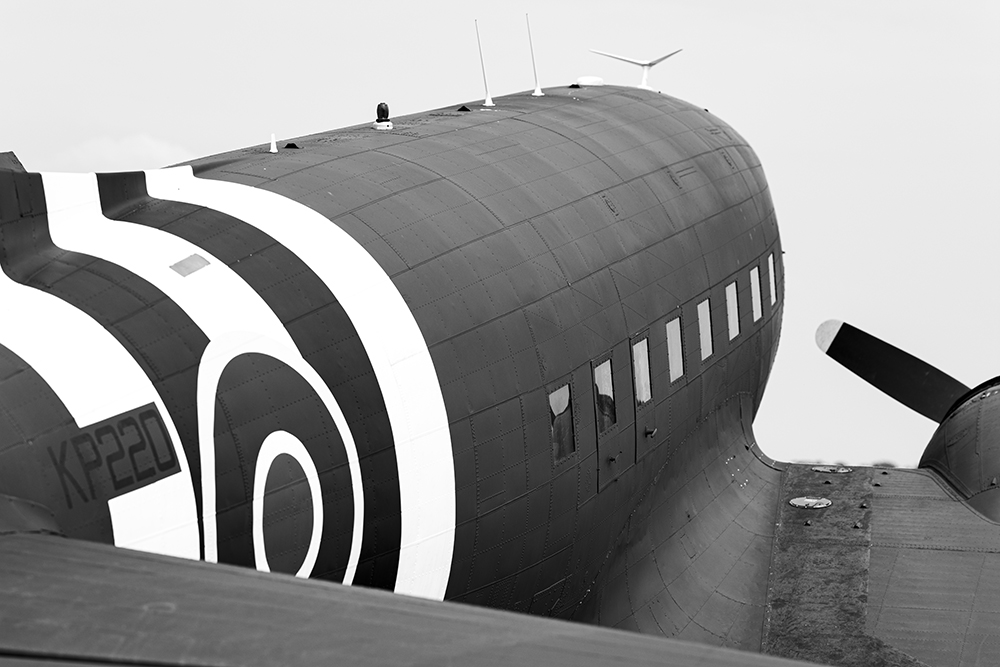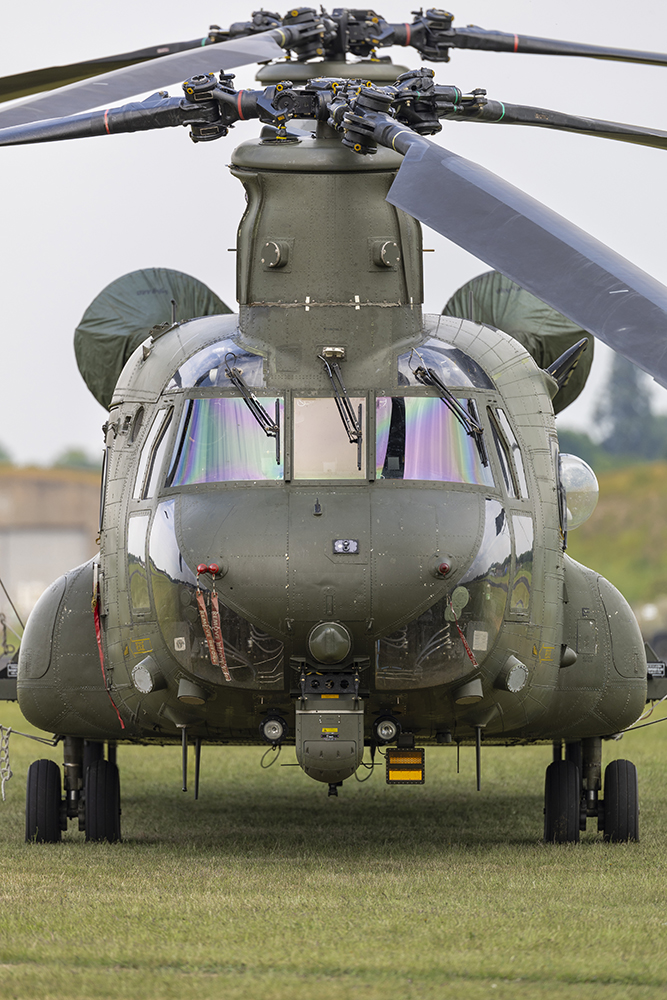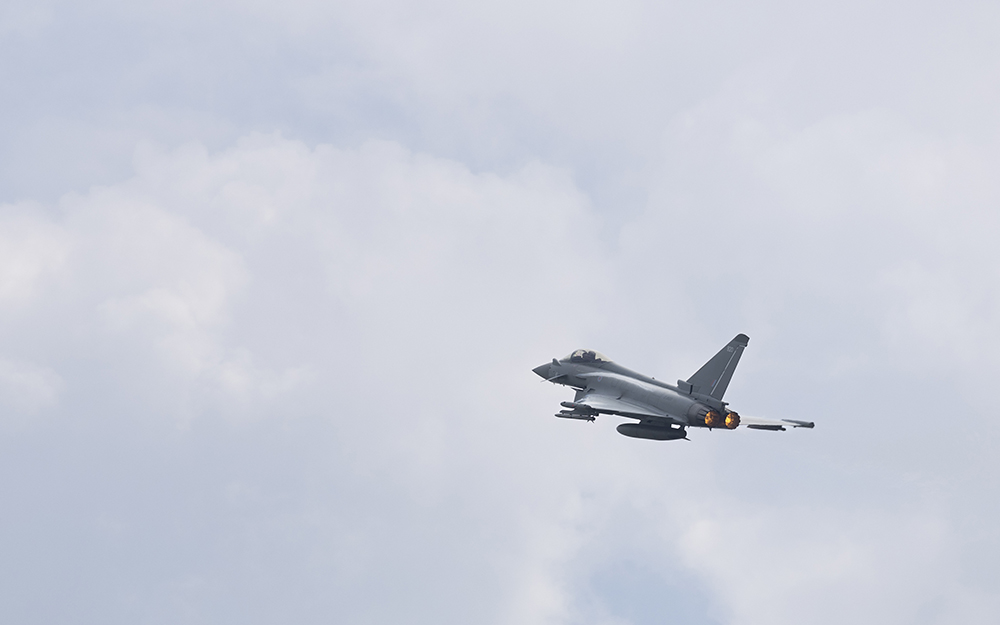Canon RF 100-300mm f2.8L IS USM Lens For Aviation Photography
Appearing somewhat out of the blue in May this year came the news of Canon's first RF Telephoto lens designed specifically for the RF mount from the ground up. This came as a bit of a surprise as the EF 300mm f/2.8 prime seemed most likely to get the RF treatment. But instead, they chose to release the all-new Canon RF 100-300mm f2.8L IS USM Lens.
Being the first major telephoto to be completely designed around the RF mount (the 600mm f4 and 400mm f2.8 being EF Mark III lenses with EF-EOS R Adapters bolted on the back) high hopes were immediately attained to see just what Canon had in mind for this end of the lens market.
Click on any of the images in this blog to view them in full resolution.
Swiss Air Force Patrouille Suisse 1:2000 f3.5 ISO100
With the wider trends of mirrorless being smaller and lighter compared to DSLR glass, this release was a step away from a direct replacement, pushing the boundaries of what is now possible in the mirrorless world.
And as the timings aligned on Canon lending us this lens with the Royal Air Force Cosford Airshow on June 11th, this became a perfect test for the compact, fast-action set-up, one-lens-does-all for event, sport, and action photographers alike.
Body used – Canon EOS R6 Mark II
Specifications At A Glance
- 100-300mm Focal Length, f2.8 Throughout – Versatile reach, all the benefits of a zoom, all the quality of a prime.
- Dual Nano USM Motors – Rapid, smooth, near-silent focusing.
- 5.5 Stops of Image Stabilisation – Increased handheld control into lowering light scenarios.
- Aspheric, Fluorite and UD Elements – Creates exceptionally sharp images.
- Heat Shield Coating – Consistent operation in high temperatures.
- RF Extender Compatibility – Use of 1.4x or 2x Extenders available.
- Lens Control Ring – More control at your fingertips.
- 9-Blade Circular Aperture – Creates smooth bokeh.
Battle of Britain Memorial Flight Lancaster 1:125 f9 ISO100
First impressions
On opening the plush padded case to reveal the RF 100-300 f2.8, the first thing that was immediately present was how small and compact this lens is for what it offers. An internally zooming lens at f2.8 gave the impression it would be a sizeable piece of kit, however in reality, it’s much smaller than expected.
It’s certainly not discreet, you will definitely be seen and noticed, however, a 9-hour day of shooting and walking about with the lens didn’t take its toll as much as I first feared. Using a monopod instead of handholding would only help this even further.
The tripod collar clicks into place and holds its own at 90-degree angles, a feature that is heavily desired across all telephoto lenses, and one that more lenses and brands should be utilising.
Dutch NH70 Crew 1:500 f2.8 ISO100
The tripod foot is sturdy and comfortable when holding and big enough to grab and carry comfortably. The icing on the cake here was that the foot was Arca Swiss designed – why more lenses don’t feature this design built in is a mystery.
Internal zooming is always a preference, the balance of the camera and lens stays more or less consistent throughout the zoom which is essential when using a monopod or gimbal head. This also helps with the use of Extenders, which means issues such as the retraction limitation on the RF 100-500mm lens don’t raise its head.
User Experience
From the off, the quality and speed of this lens was impossible to miss. Not being used to having f2.8 on tap, the ability to keep ISO low, but still be able to ramp up the shutter speed to 1/2500+ available unaffected by increased noise, was a dream.
On the other end of the spectrum, when shutter speeds needed to be slower, and the aperture closed to f9 and beyond, the sharpness and quality were maintained while it was wide open.
One thing to note here is that the lens doesn’t have space for a drop-in filter, and with the filter diameter at the objective end being 112mm, this would be a big and expensive ND filter to replace this functionality, if you can find one.
Swiss Air Force Patrouille Suisse 1:2000 f3.5 ISO100
It was business as usual with Canon’s L Series of lenses. The image quality and the way these lenses reproduce the colour of the scene always leaves a mark in the sand. Even checking the back of the camera on an unusually sunny Shropshire day for the Airshow, it was evident that Canon’s L lenses are still battling for the top spot in terms of sheer optical quality.
As the weather did turn in the afternoon and the clouds covered over the blistering sunshine, this is where having the wider apertures really came into play.
Being able to keep shutter speeds quicker than 1/1000 at f2.8, and only needing to bump the ISO slightly, allowed for shooting without compromise, well into the deteriorating light. It’s at these moments that, were this a professional shoot, the big telephotos really prove their worth.
In a gap in the flying display, the opportunity was taken to wander the static aircraft, this is where normally you’d be reaching for the ultra-wide angles to get the whole aircraft in shot. Walking around with the 100-300mm did feel a bit out of place in this environment, but it also presented a great challenge in how to approach static aircraft in shots in a different way.
Being limited to the longer focal lengths forces you to look for differing angles and seek out the more abstract side of aviation photography, where you discover that what to some can seem a lack-lustre subject matter, can actually produce some lovely sweeping lines and compositions in an image, whether this be the lines of the fuselage or wings, or picking out specific details of an aircraft’s paint scheme that may go unnoticed. This is proven below by this shot of a Dakota, converted to black and white, the detail on tap is sublime, and became my favourite image from the day.
Click on any of the images in this blog to view them in full resolution.
Dakota 1:1000 f4 ISO100
Can this lens do it all?
In short, yes.
In detail, there were only a brief couple of moments where a slightly longer lens would have been handy, mainly in the solo aircraft. This would have easily been covered by an Extender, which you would know exactly when to put on and take off for each differing display item.
For the smaller aerodrome that Cosford is, it was almost the perfect lens, and the only lens that was really needed to have a great day of photography – Coupled with the R6 Mark II which is my personal favourite body in Canons mirrorless line at present.
Not just for aviation photographers, this lens would equally, and more often, be at home at a myriad of sporting events, be it Tennis, Cycling, Football or Rugby. It won’t be long until you’re seeing this lens covering all the main sporting occasions. Canon has hit the nail on the head with the tagline of ‘all the benefits of a zoom, all the quality of a prime’.
Where it will really shine is motorsport photography, countless times spotted at the side of a racetrack is a two-camera setup, one with a 70-200mm lens on a harness, and one with a 400mm f2.8 on a monopod. This offers 95% of both in a single lens.
RAF Chinook 1:500 f2.8 ISO100
Overall Thoughts
Having spent the day with this lens between flying displays and static park, it simply didn’t miss a beat the entire time. Faultless performance as you would expect from a lens of this calibre. The main misconception going into using this lens was that it was simply a glorified 300mm f2.8 prime. But how wrong that proved to be.
The ability to have the quality of the 300mm primes of old, but where the subject would just come too close, and go beyond the frame, is solved with a short pinch out of the zoom, allowing for more photos to be taken in each burst.
The second misconception was that for air displays specifically, it would be too short, and leave the subject too small in the frame. Again, incorrect, although solo aircraft did require a crop, for display teams and airframes that were allowed to display closer to the crowd, it was exactly what you would want in terms of focal length.
Helped by Cosford being a small aerodrome and forcing the display hardware to keep to a tighter boundary, there was no lusting after a much longer lens. For those still keen, using a 1.4x Extender would have been more than enough to cover all basis.
The sharpness of the lens, coupled with the autofocus capability, and the R6 Mark II’s AF tracking, made it a pleasure to use, with more keepers than ever returning from an air day.
Should you buy this lens?
There’s no shying away from the cost of this lens, as is the case with all the big professional telephoto lenses. However, they are designed to do specific jobs and do them to the best possible standard, and for those that require this level of equipment, the cost isn’t the main factor.
If you’re looking for sheer quality as a professional sports and events photographer, there isn’t much else that competes with this lens at present. Sony has a development announcement for a 300mm f2.8 Prime, however, this ignores the wider end of the focal length. Nikon, who have a vast array of options for longer glass, are yet to release something within this focal range for Z mount. Only time will tell if others decide to follow Canon’s lead here.
RAF Typhoon 1:1250 f4 ISO100
Thoughts on the future
It will be interesting to see how Canon and others decide to progress from here, the telephoto end of the market is usually pretty standard, with the 2 main lenses being the 600mm f4 and the 400mm f2.8.
Nikon at present is the only company trying something different with the inclusion of the Teleconverter built into the lenses themselves, Sony’s designs are stapled classics and simple, built with their now renowned G Master quality.
Canon, who have potentially been playing it safe with their recreations of EF glass with an RF mount, have made me sit up with this release, and wonder what exciting paths they might be heading down in the future. Because if they follow the lines of the RF 100-300 f2.8, then they will surely be on to a winner.
Convinced yet?
Check out the lens here: Canon RF 100-300mm f2.8L IS USM Lens
Read next
-
Photographing the Royal International Air Tattoo – A Guide to Aviation Photography
- Two New MEGA Telephoto Lenses from Canon
Thank you!
Thanks for taking the time to read our blog, we really do hope they help you out and answer some of your questions. If you still have some unanswered, then please feel free to get in touch with our team of experts.
We have a LiveChat option on our website and we can, of course, be contacted via our email, we're also on the end of the phone too! Read more on how to contact us here >
Want to write for us?
If you've got experience with producing content on photo, video and/or optics products or techniques then we would love to hear from you. Contact our blog editor, Bea, with a sample of your work at [email protected].
- By Aled Phillips
- 7 Jul 2023




























































